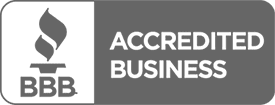Program Outline
This 600 clock hour program is designed to prepare you for an entry-level position within the criminal justice field!
Lesson 1: Criminal Justice Today & Causes of Crime »
This lesson will give the students the groundwork to move through the remainder of the course by giving them the most basic criminal justice skills such as explaining the major issues in criminal justice today, identifying and listing different types of crime, outlining the 3 levels in law enforcement, and the basic elements of the corrections system. It will also give them in-depth information on the various criminal justice models including the conflict and consensus model, the “wedding cake” model, the due process and crime control models, and the medical model of addiction and the criminal model of addiction. Lesson 1 will discuss the very important connection between offenders and victims. This lesson will also explain several theories including why classical criminology is based on choice theory, the three major theories of social structure with their respective explanations of crime, contrast positivism with classical criminology, the chronic offender theory, and finally how life course criminology differs from all the other theories.
Lesson 2: The Crime Picture »
Lesson 2 deals with crime trends and data including the way that the FBI reports crime data and the two ways they are reported, learning about the Uniform Crime Report (UCR) and the differences between Part I and Part II offenses, the shortcomings of the UCR for crime measurement, why issues of race and ethnicity tend to be overstated, the factors criminologists use to explain trends in the crime rate, and the differences between National Crime Victimization Survey and self-reported surveys. This lesson also deals with the differences between mala in se and mala prohibita along with the main goals of criminal and civil law. Finally, the lesson will discuss why there is a peak in the number of incarcerated women.
Lesson 3: Inside Criminal Law »
Lesson 3 teaches students the four written sources of American criminal law as well as the two basic functions of criminal law and how the doctrine of strict liability applies. Students will also be able to differentiate between substantive and procedural law and explain the most important excuses for criminal defenses. It will teach the importance of due process and stare decisis as well as the elements needed to establish mens rea.
Lesson 4: Law Enforcement Today »
Lesson 4 will identify the basic duties of the police, FBI, private security, and additional law enforcement agencies under the US Department of Homeland Security. Students will learn how the modern policing system was affected by patronage and intelligence-led policing as well as the results of the Wickersham Commission. They will be able to differentiate between the police academy and field training as recruit learning tools and the challenges facing women hoping to make a career in the law enforcement field.
Lesson 5: Problems and Solutions»
Lesson 5 discusses the purposes of police patrol, why police officers are allowed discretionary power and ethical dilemmas they deal with, when they are justified in utilizing deadly force, as well as learning about police corruption. They will be able to identify why some investigation strategies are considered aggressive as well as the use of DNA fingerprinting. Students will learn about community polling and problem-oriented policing as well as how police respond more effectively to 911 calls using differential response strategies.
Lesson 6: Police & the Constitution / The Rules of Law Enforcement »
Lesson 6 outlines for the students the four sources of probable cause, four elements needed prior to arrest, probable cause, exclusionary rule and its exceptions and the three basic types of police identification. It will teach students four categories of items that can be seized during a search, the plain view doctrine, and why searches can be made without a warrant. Students will also learn to recite the Miranda warning, learn when the Miranda warning is unnecessary, and the differences between a stop and a frisk (using the importance of Terry v. Ohio).
Lesson 7: Courts & the Quest for Justice »
Lesson 7 will teach students about the court system including the four functions of the courts, the differences between trial and appellate courts, the federal court system, levels of the state court system, and how a case is brought to the Supreme Court. They will also learn about the courtroom including the actions of a judge prior to the trial, the different members of the courtroom work group, and the differences between judges at the state and federal levels. Finally, they will be able to define jurisdiction and the difference between geographic and subject-matter jurisdiction.
Lesson 8: Pre-trial Procedures »
Lesson 8 discusses all of the pre-trial persons and procedures including: the names and powers of public prosecutors (including screening cases) as well as their contrast between elected official and crime fighters; the responsibilities of defense attorneys; and three types of defense allocation programs. The students will learn how judge’s decide on setting bail, the requirements of potential jurors, possible defenses, and the protections allotted to criminal defendants. They will be able to list the steps of a criminal jury trial, what “taking the Fifth” means, differences between testimony and evidence, differences between lay witnesses and expert witnesses, and the differences between direct and circumstantial evidence. They will also learn about the steps to an appeal, how both the defense and prosecutors can plea bargain, and how a criminal defendant may be tried for a second time for the same crime.
Lesson 9: The Criminal Trial
This lesson will teach pre-trial procedures in the American adversarial system with special examination of the role of prosecutors and defense attorneys in the trial process. This includes study of detention, bail, probable cause, grand juries, and plea bargaining.
Lesson 10: Punishment & Sentencing »
Lesson 10 will discuss the six forms of punishment, the reasoning for sentencing criminals, indeterminate and determinate sentencing, and why sentencing reform has occurred. The students will learn why there is a difference between the sentence imposed and time served, and who has input in sentencing (as well as pros and cons of victim impact statements). Finally, the students will learn about death penalty sentencing as well as the main issues in the death penalty debate.
Lesson 10: Probation & Community Corrections »
Lesson 10 will educate the students on alternative arrangements that combine probation with incarceration as well as the need for community-based correction programs. They will learn the conditions of probation, why probation may be revoked, why probation may be denied and why the job of a probation officer has become more dangerous. Finally, they will learn the different sentencing options besides imprisonments and probation, intensive supervision probation, and the different levels of home monitoring.
Lesson 11: Prisons & Jails »
During Lesson 11, students will learn about the models and types of prisons and prison systems and what may have causes the prison population to grow dramatically over the decades (and the consequences of high incarceration rates). Student will be able to explain about prison governance and the formal prison management system as well as why private prisons can be run more cheaply than public ones. Finally, they will learn the differences between jails and prisons and how jails are administered.
Lesson 12: Prisons and Jails»
In Lesson 12, the students will learn possible patterns of inmate behavior, the concept of prisons as a “total institution”, violent behavior in prisons, and about prisoner rights. They will be able to explain the six job categories of correctional officers and how to determine if a prisoner’s rights have been violated. They will be able to contrast the following terms: probation, parole, mandatory release, pardon, furlough. Finally, they will understand the goal of prisoner reentry programs, parole conditions and special conditions of a paroled child molester.
Lesson 13: The Prison Experience and Prisoner Reentry»
This lesson will focus on prisons and jails and study overcrowding, private prisons, mentally ill inmates, and ethical issues of these topics. Prison organization and management structures vary and are examined along with inmate population trends to provide learners with more details of the American Criminal Justice System’s evolution
Lesson 14: The Juvenile System»
Lesson 14 will teach students the four major differences between the juvenile and adult courts, the most important Supreme Court case dealing juvenile justice, the four stages of juvenile pretrial procedure, and the four categories of residential treatment programs for juvenile offenders. They will know the child-saving movement as well as the parens patriae doctrine. Finally, they will learn about the one variable that matches high juvenile crime rates.
Lesson 15: Today’s Challenges »
A comprehensive description of the journey taken by juveniles from first contact with police to trial and punishment occurs in this lesson.
Theories are scrutinized to understand juvenile delinquency and what steps can be taken to prevent it.
Lesson 16: Final exams and Projects »
This lesson looks at three important issues: (1) privacy in the age of terrorism, (2) cyber crime, and (3) white-collar crime. Anti-terrorism legislation, the constitutionality of government mass surveillance techniques, and issues of Internet speech add to the study of the above issues which asks learners to exercise ethical judgment about white-collar crimes and punishment.
Also, this lesson reviews the basics of the criminal justice system and examines what some professionals and scholars suggest is is needed in the future.
TECHNOLOGY REQUIREMENTS The following lists the minimum recommended hardware and software requirements a student will need to successfully access Lakewood College’s online academic programs: Audio: sound card and speakers or headphones for listening Internet connection: 56 Kbps for self-paced courses (caution: if video is present, it may be poor at this speed) Screen resolution: at least 800 x 600 Internet browser: IE 7 or greater, Firefox 2 or greater, browser set to accept cookies and to show the newest version of a page Media Player such Windows Media Player, Camtasia, or Vidster (all of which can be downloaded for free at the respective websites). Pop-up blocker must be disabled **For optimal results the following is recommended: Internet connection: Cable modem, DSL or better (required for high-quality video) Screen resolution: 1024 x 768
State requirements
A career in this field may require you to meet certain licensing, training, and other requirements that can vary by vocation and state. You should check with your state, local government, and/or licensing board to find out which requirements may be applicable in your state. Click here for contact information on state licensing/regulatory boards and certain professional licensing information.







